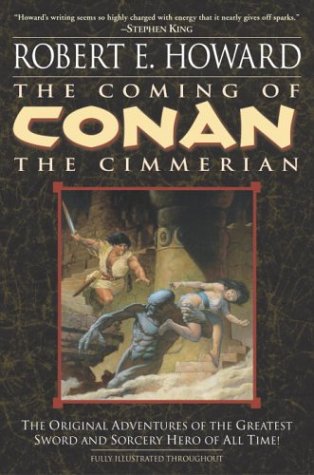Poem: How To Grow Up
5 Questions About: Nuns
Musical Memory: Murmuring to R.E.M.
The 8 Coolest Sci-Fi Flicks
First Snow
Essay: Fixing our Reading Problem
5 Questions About: The Pilgrims
Under God's Right Arm: Christma$ a$ a Chri$tian
Literary Criticism: Richard Matheson's "I Am Legend"
Literary Criticism
Fantastically Bad Cinema
Essays
Under God's Right Arm
June 2006
July 2006
August 2006
September 2006
October 2006
November 2006
December 2006
January 2007
February 2007
March 2007
April 2007
May 2007
June 2007
July 2007
August 2007
September 2007
October 2007
November 2007
December 2007
January 2008
February 2008
March 2008
April 2008
May 2008
June 2008
July 2008
August 2008
September 2008
October 2008
November 2008
December 2008
January 2009
February 2009
March 2009
Alcoholic Poet
Baby Got Books
Beaman's World
BiblioAddict
Biblio Brat
Bill Crider's Pop Cultural Magazine
The Bleeding Tree
Blog Cabins: Movie Reviews
A Book Blogger's Diary
BookClover
Bookgasm
Bookgirl's Nightstand
Books I Done Read
Book Stack
The Book Trib
Cold Hard Football Facts
Creator of Circumstance
D-Movie Critic
The Dark Phantom Review
The Dark Sublime
Darque Reviews
Dave's Movie Reviews
Dane of War
David H. Schleicher
Devourer of Books
A Dribble of Ink
The Drunken Severed Head
Editorial Ass
Emerging Emma
Enter the Octopus
Fatally Yours
Flickhead
The Genre Files
The Gravel Pit
Gravetapping
Hello! Yoshi
HighTalk
Highway 62
The Horrors Of It All
In No Particular Order
It's A Blog Eat Blog World
Killer Kittens From Beyond the Grave
The Lair of the Evil DM
Loose Leafs From a Commonplace
Lost in the Frame
Little Black Duck
Madam Miaow Says
McSweeney's
Metaxucafe
Mike Snider on Poetry
The Millions
Moon in the Gutter
New Movie Cynics Reviews
Naked Without Books
A Newbie's Guide to Publishing
New & Improved Ed Gorman
9 to 5 Poet
No Smoking in the Skull Cave
Orpheus Sings the Guitar Electric
Polly Frost's Blog
Pop Sensation
Raincoaster
R.A. Salvatore
Reading is My Superpower
Richard Gibson
SciFi Chick
She Is Too Fond Of Books
The Short Review
Small Crimes
So Many Books
The Soulless Machine Review
Sunset Gun
That Shakesperherian Rag
Thorne's World
The Toasted Scrimitar
This Distracted Globe
Tomb It May Concern
2 Blowhards
Under God's Right Arm
A Variety of Words
The Vault of Horrr
Ward 6
When the Dead Walk the Earth
The World in the Satin Bag
Zoe's Fantasy
Zombo's Closet of Horror
Bookaholic Blogring
Power By Ringsurf
(Quick reviews on the books we’ve been reading. A “cracked-back” is what happens to the spine of a new book once you’ve thoroughly read it. Please feel free to add your own list of recommendations by leaving behind a comment.)
As I Lay Dying
By William Faulkner
Faulkner
Faulkner is always a challenging read, but worth the effort. “As I Lay Dying” is no exception. In fact, it’s one of his best. The novel is broken into short chapters narrated in the first person by numerous characters – most of them members of the Bundren family. The clan is transporting its dead matriarch, Addie, to her hometown for burial. The family, crowded onto a mule-drawn wagon, experiences several disasters and semi-comic tragedies as they make the arduous sojourn. Faulkner’s stream-of-conscious writing is difficult to wade through at first as the point of view shifts rapidly with each chapter. The characters narrate in the moment and without much historical context. But that’s the brilliance of Faulkner. The story becomes that much richer and complex as nuggets of information reveal themselves. “As I Lay Dying” is a great place for readers who have never read Faulkner to start. The plot is relatively simple (although the characters are complex) and after the first part the style becomes part of the charm of the novel.
Grade: A
Alex
By Mark Kalesniko

“Alex” is a graphic novel about a frustrated animation artist who burns out working at a large
Grade: A-
Breaking the Spell: Religion as a Natural Phenomenon
By Danie l C. Dennett
l C. Dennett
This is one in a long list of books exploring religion and atheism. Dennett, a philosophy professor at
Grade: B-
By Robert Louis Stevenson
Robert Louis Stevenson deserves more credit as a novelist. He is rarely held up as one of the greatest writers in literature, but he should be. After all, this is the writer who introduced some of the most compelling and popular characters in literature: Dr. Jekyll and Mr. Hyde and Long John Silver. The latter, of course, stalks through the pages of “
Grade: A-
Labels: books, Cracked-Back, Daniel C Dennett, literature, Mark Kalesniko, Robert Louis Stevenson, William Faulkner
 StumbleUpon |
StumbleUpon |
 del.icio.us |
del.icio.us |
 Technorati |
Technorati |

This work is licensed under a Creative Commons Attribution-No Derivative Works 3.0 License.
The Template is generated via PsycHo and is Licensed.




